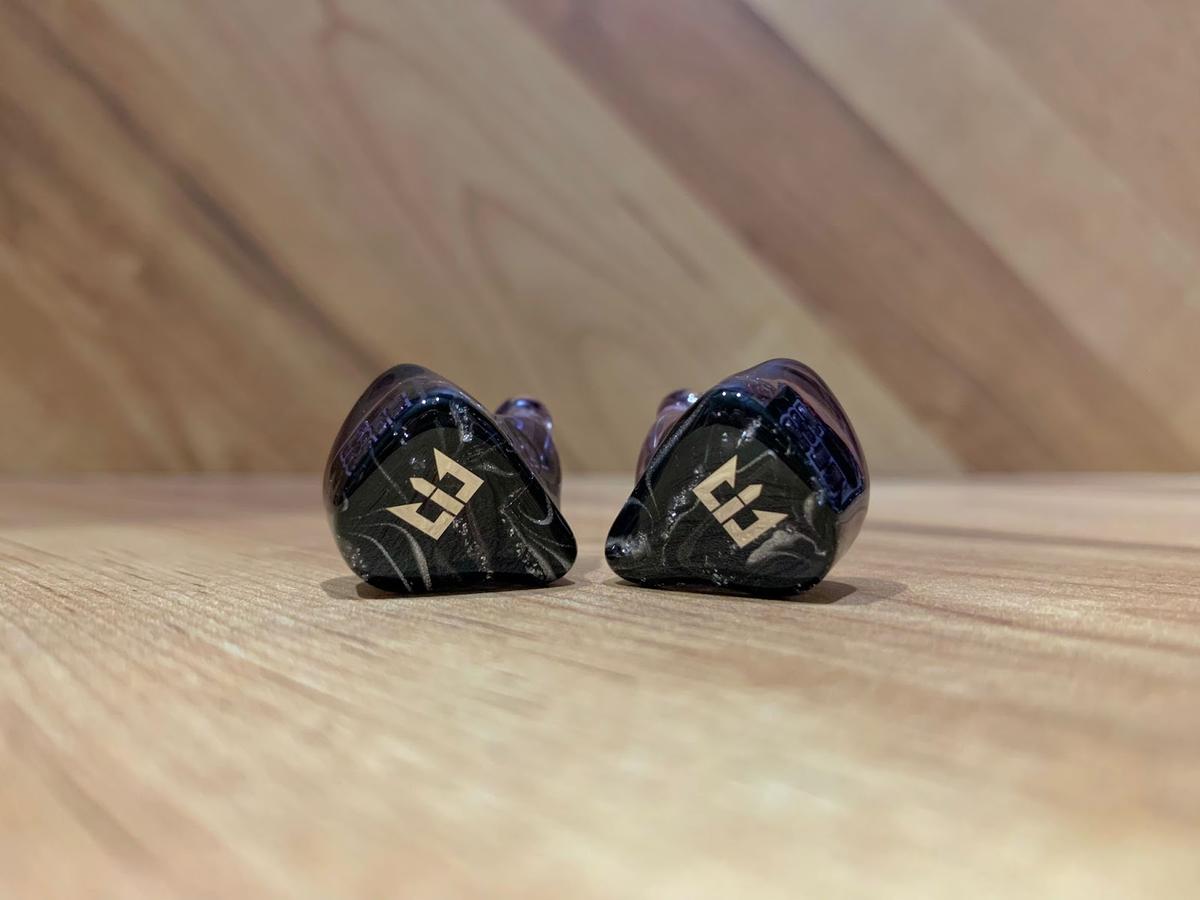A shooting star has arrived! The Meteor land with a smooth, balanced, and lush tonality.
It is no exaggeration to say that KBEAR (and their sister company TRI), have come leaps and bounds in the cut-throat CHI-FI IEM industry in the past few years. The Meteor is TRI’s latest foray into the near USD$100 market.
- Solid and beautiful build
- Comfortable
- Good spread of accessories
- Tonally well-balanced and versatile
- Non-fatiguing, smooth, and sibilance-free
- Lush midrange
- Sub-bass and higher treble roll-off
- Not class-leading for technicalities
- Driver flex
Company Overview
TRI Audio is the premium wing of KBEAR. They released their first pair of IEMs in 2019, the I4, and since then have been on a meteoric rise (no pun intended). While KBEAR targets the budget CHI-FI market, TRI is primarily focussed on the mid-FI segment and has released some crowd favorites such as the I3, I3 Pro, and Starsea. TRI even tackled the top-of-the-line segment with the Starlight.
TRI has recently entered the DAP marketplace with the TRI TK2.
Technical Specifications
- Form: IEMs
- Drivers: 1 x 10mm beryllium-plated diaphragm dynamic driver, 1 x Knowles ED-29689 balanced armature driver
- Impedance (Ohm): 12±2 Ω
- Sensitivity (dB): 105±3dB SPL/mW
- Frequency Response (Hz): 20 Hz – 20 KHz
- Removable Cable: Y
- Cable: 8-core 5N braided oxygen free copper cable
- Cup/Shell Plug: 2 pin, 0.78 mm
- Mic: N
Packaging
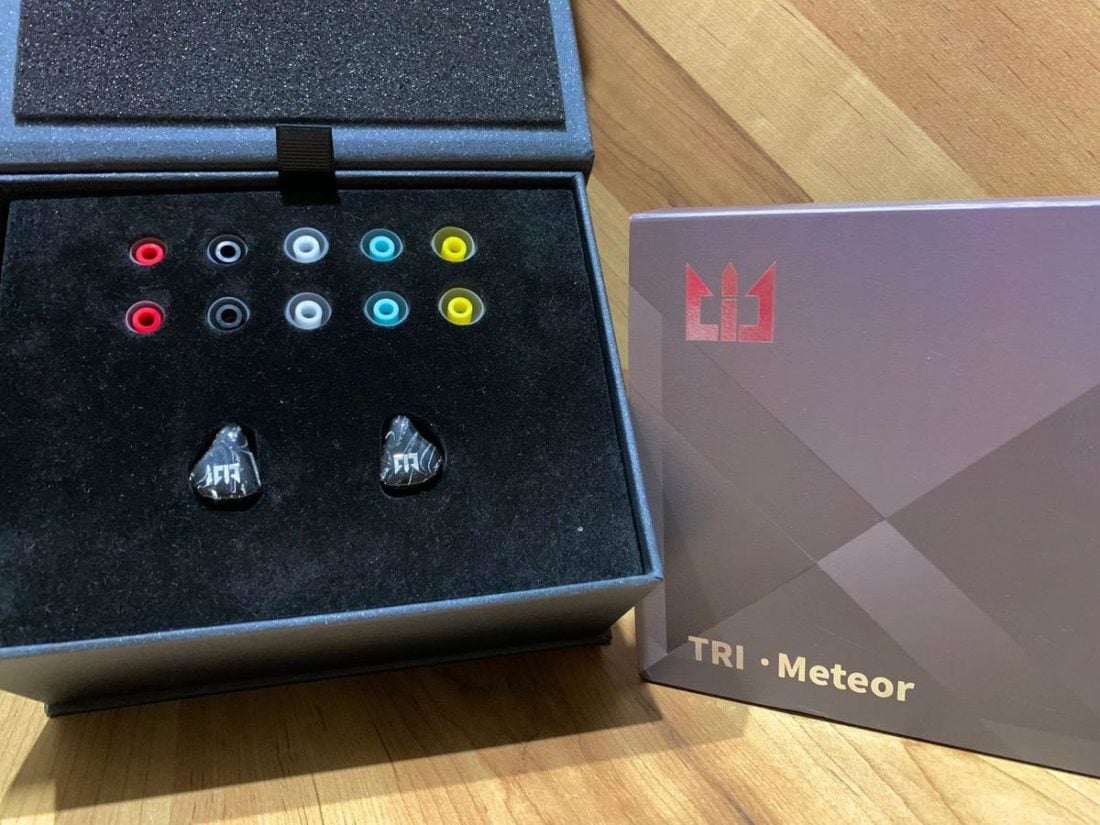
In the box
- TRI Meteor IEMs
- Cable
- Cleaning brush
- Array of tips
- Faux leather case
- Cleaning cloth
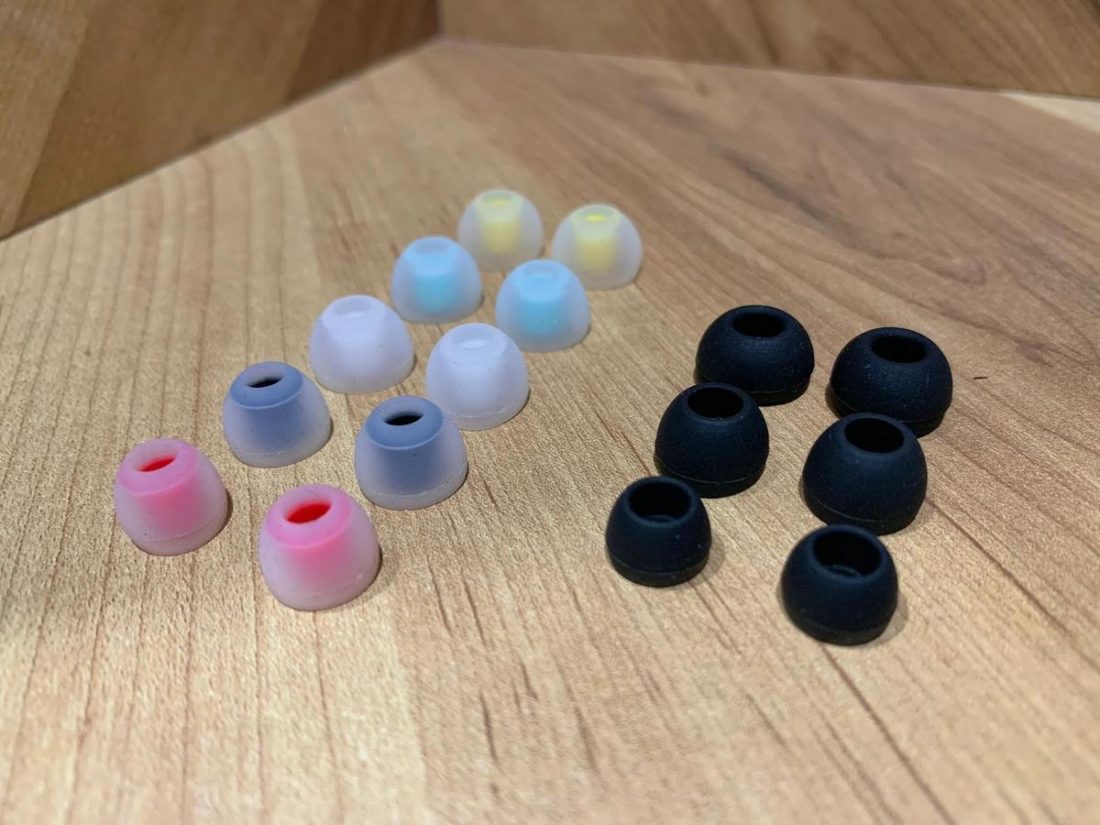
Cable
The included cable is an 8-core, 5N, braided, oxygen-free copper wire. It is free from microphonics and supple, with moderate thickness. I like that it doesn’t easily tangle too.
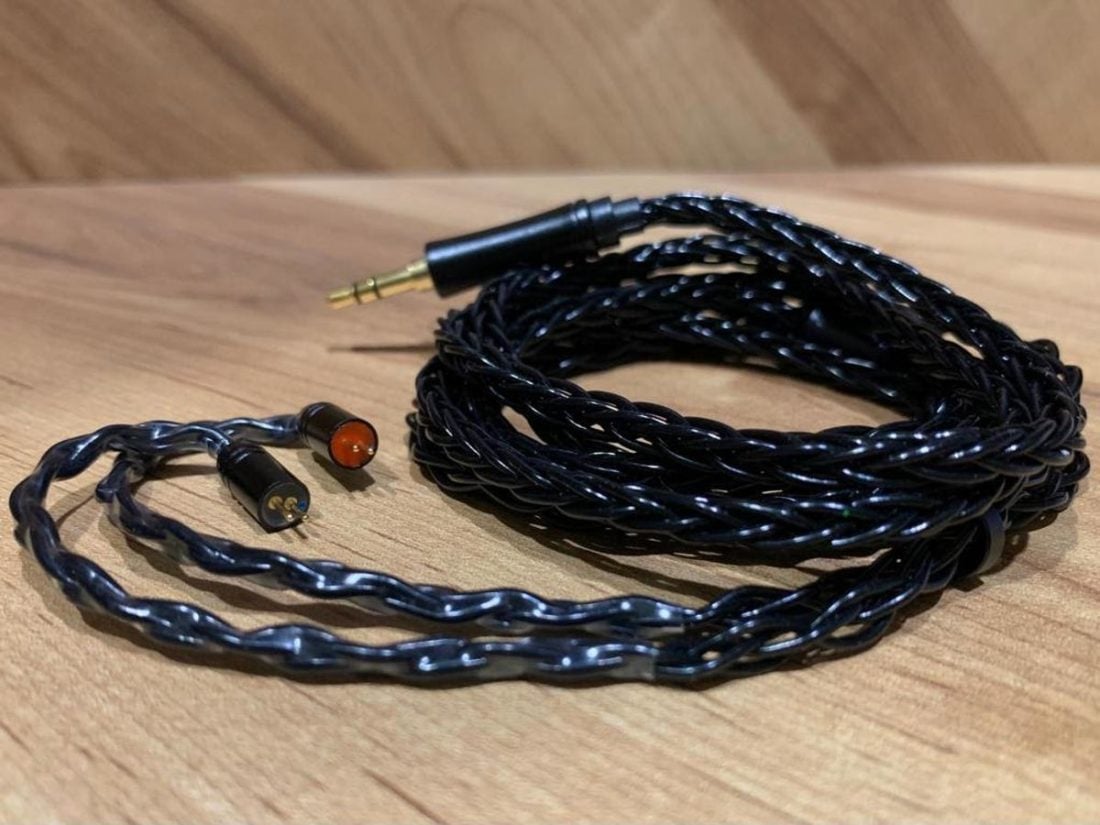
A 2-pin connector is always welcome in my book, as I have had my fair share of MMCX mishaps with frequent cable changes.
Case
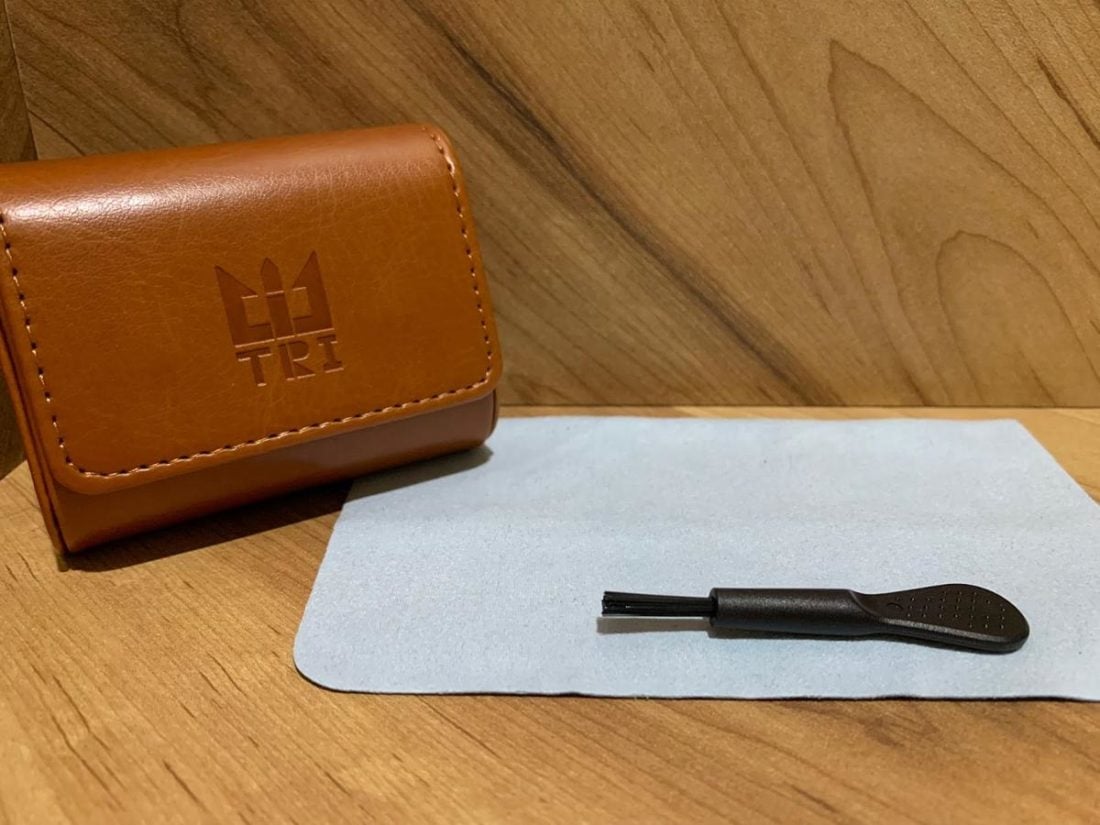
Design
The Meteor feature shells made of hypo-allergenic egger resin. They feel and look like semi-customs. TRI says each shell is individually handcrafted with a star-like motif, and hence each earpiece is unique!
Isolation on the Meteor is bang average, due to the vents for the dynamic drivers. Nevertheless, the Meteor are still suitable for outdoor use.
Comfort
Ergonomics is great and this set is very comfortable. There is a small concha protrusion to provide extra grip (without poking the ears).
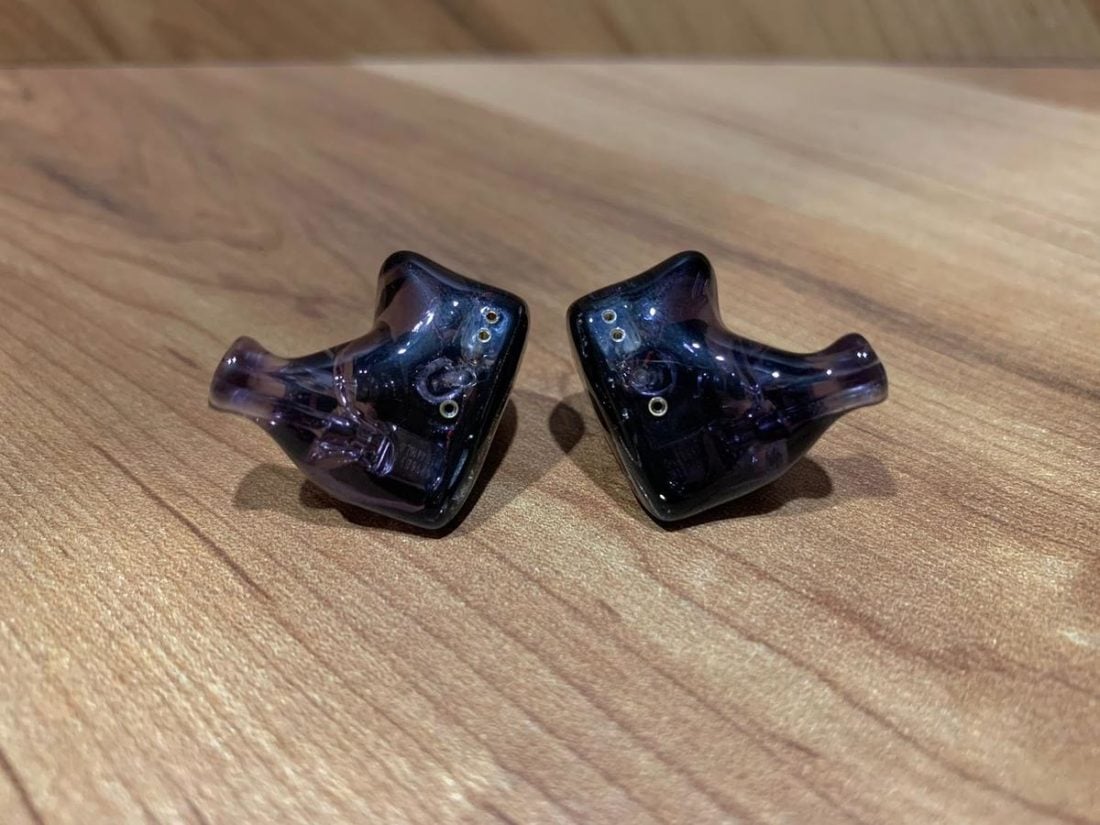
Internals
The Meteor contain a 10 mm dynamic driver with a beryllium-plated diaphragm (this handles the lower frequencies) paired with a Knowles 29689 balanced armature unit handling the rest of the frequency range. These 2 drivers are arranged in a dual-band, two-way frequency crossover.
The Meteor can be driven from weaker sources, but they scale with amping, in the areas of dynamics, bass tightness and micro-details.
TRI Meteor Sound
The Meteor are a warm U-shaped set. Tonally, they are very balanced, short of some loss of higher treble and sub-bass. Essentially, this tuning gives the Meteor an all-rounder advantage and should please most audiophiles except for diehard trebleheads and bassheads.
I’m glad to report that there isn’t much incoherency here that can plague other hybrid IEM designs. Some hybrid competitors have too slow bass compared to their BAs in the midrange/treble, or they show timbral incoherency across all frequencies.
In terms of technicalities, the soundstage is wide but below average in depth/height. Imaging, microdetails, instrument separation are about average for the near $100 bracket.
The Meteor go for tonality over technicalities.
There is a slight tinge of BA timbre for acoustic instruments, but the Meteor have one of the better timbral accuracies for a pair of hybrid IEMs . Knowles BA drivers generally give a well-rounded note edge and that can be heard in the Meteor. This gives a bit of a loss of edge definition in music and some blunted dynamics, which can be a pro or con depending on your personal preferences.
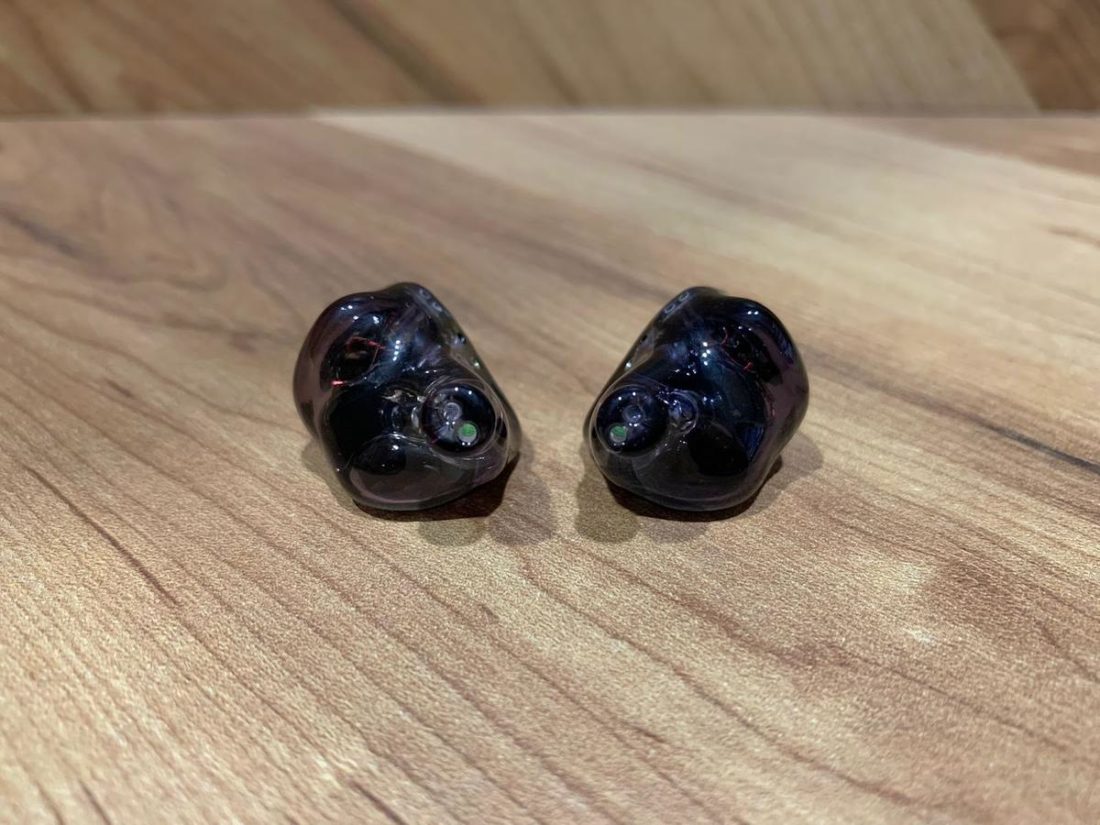
Bass
The TRI Meteor are a mid-bass focused pair of IEMs. The subbass isn’t the most extended considering they have a beryllium DD and there is just a small tickling rumble on sub-bass heavy tracks. Overall, bass quantity is north of neutral but not at basshead levels.
Bass speed is moderate and bass texturing is about average, with a slight mid-bass bleed.
Midrange
The aforementioned mid-bass bleed adds some warmth and lushness to the lower mids and gives the midrange some heft. The entire midrange is quite layered, and balances a razor-thin edge of having transparency and clarity yet with minimal harshness. It is quite “musical” as some people would use the term.
The upper mids are boosted slightly, and the Meteor manages to push forward vocals without veering to shoutiness.
The midrange is my favorite part of the Meteor.
Treble
The Meteor are safe for treble-sensitive folk. The Meteor do not have the most extended treble or air, so treble-loving listeners might find this area lacking. Consequently, the Meteor are not fatiguing and have no sibilance.
Micro-details are still present, but perhaps not as emphasized as sets with more uplifted treble frequencies. Cymbals and high hats are quite natural sounding but these higher-frequency percussion instruments may take a backseat. This avoids the “splashiness” of some hybrids with artificially boosted “fake” clarity.
Comparisons
I compared the TRI Meteor with some other hybrids in this price range. Single DD sets and pure BA IEMs were left out as the different transducer types have their own pros and cons.
Vs. TRI Starsea
The TRI Starsea have 4 tuning options, so they are more versatile. The Starsea can be changed from neutral to a mild V-shape signature with a flick of the tuning switches. The Starsea have a thinner note weight and have less warmth and lushness, even on the bassiest switch. The Starsea come across as more analytical, with more air and upper treble.
Technically, in microdetails, imaging, instrument separation and soundstage, the TRI Starsea is better, but the Starsea have a more pronounced BA timbre with more instances of treble harshness.
These 2 sets are complementary and they bring different things to the table – the Starsea are more analytical and better suited to critical listening or stage monitoring. The Meteor are more laid back, focusing on tonality rather than outright technicalities, and are more suited for chilling and relaxing while listening to music.
Vs. ThieAudio Legacy 2
The Legacy 2 are hybrid IEMs featuring a similar configuration of a beryllium DD with a Knowles BA.
The Legacy 2 have poorer timbral accuracy for acoustic instruments and also have a less lush midrange. The Legacy 2 have slightly weaker technical performance, losing to the Meteor in imaging, micro-details, and clarity.
Where to Buy
Conclusion
The Meteor are a solid release in the ultra crowded near-$100 market, with their smooth and lush midrange being the star here. Likely, only the most hardcore bass/treble heads would not find the tuning pleasing.
While technically there may be better sets out there, the Meteor bring a well balanced signature to the table. Indeed, it is not that easy to find a non-fatiguing IEM that still shows a relatively good sprinkle of technical performance. It is much easier to find a technical multi-driver behemoth (though with timbral or tonal flaws) than it is to find something with good tonality at this price bracket.
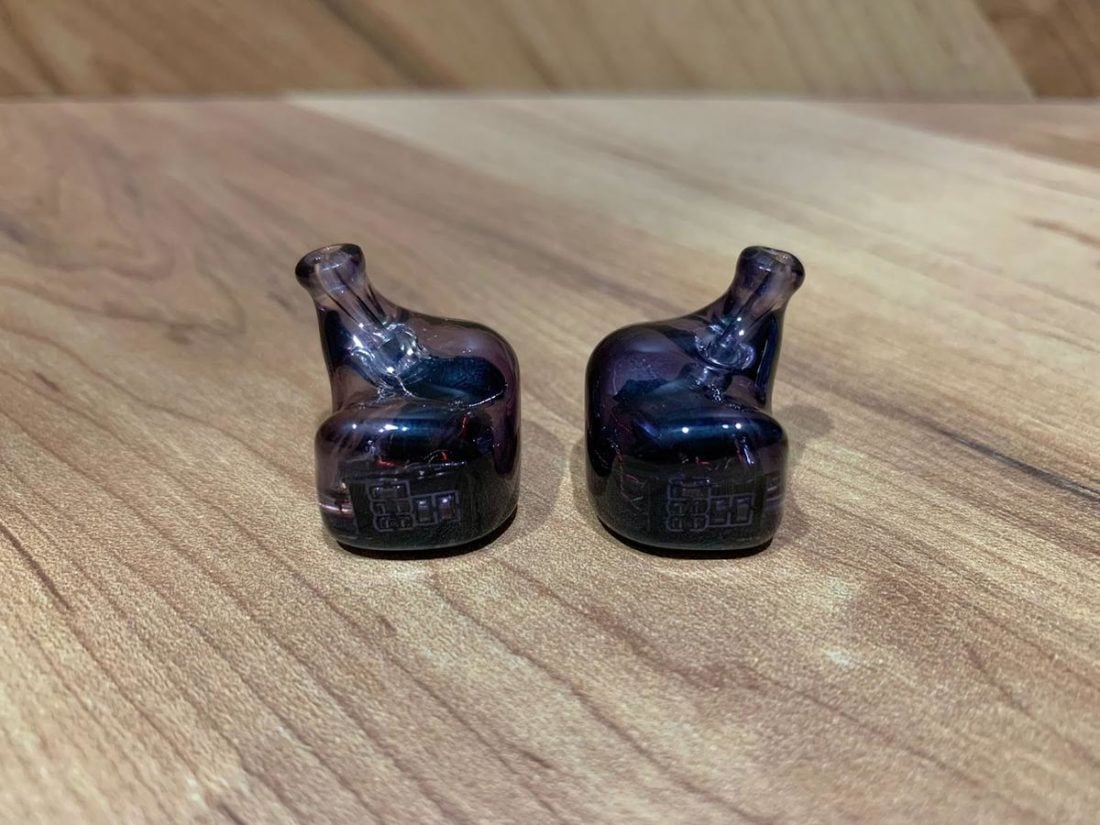
I’ve encountered my fair share of beautiful looking but bad sounding IEMs, but I’m glad to report here that the Meteor do sound as good as they look!
